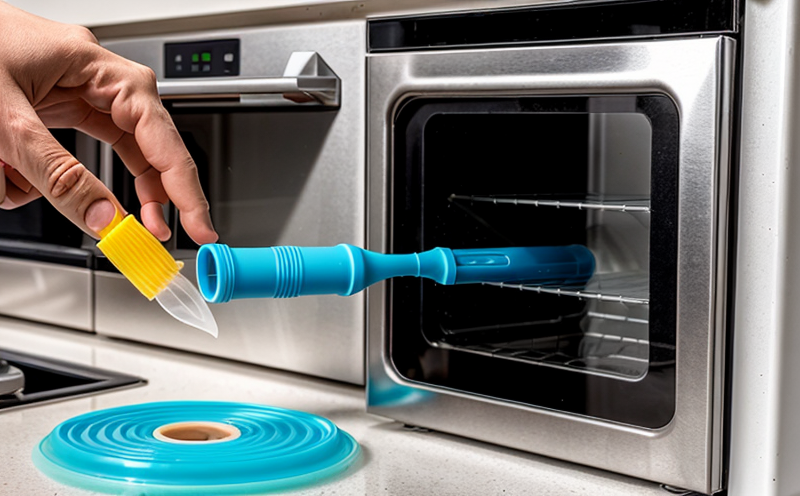ISO 899 Creep Testing of Household Plastics
The International Organization for Standardization (ISO) has developed a series of standards to ensure that materials used in various applications perform reliably under stress. One such standard is ISO 899, which pertains specifically to creep testing of plastics and other polymer materials.
Creep testing evaluates the deformation behavior of materials subjected to constant load over extended periods. This type of testing is particularly important for household plastics because it helps ensure that products like kitchenware, toys, and home decor items maintain their structural integrity under everyday usage conditions.
The procedure outlined in ISO 899 provides a standardized method for determining the creep compliance of test specimens made from thermoplastics, elastomers, and other polymeric materials. Compliance with these standards is crucial for manufacturers to meet regulatory requirements and provide safe, durable products to consumers.
During creep testing, samples are placed under specified loads and then subjected to temperatures representative of real-world conditions. The test measures how much the sample deforms over time as it remains in this state. This information helps designers optimize material selection and process parameters to enhance product performance.
The scope of ISO 899 is broad enough to cover a wide range of household plastics, including those used in food containers, children's toys, and furniture components. By adhering to these standards, manufacturers can ensure their products meet stringent quality control criteria and are safe for end-users.
Understanding the creep behavior of household plastics is essential for predicting long-term performance in various environments. Creep testing allows engineers to identify materials that exhibit unacceptable deformation rates under typical operating conditions. This knowledge guides product development efforts towards selecting more suitable polymers or enhancing existing ones through modifications such as blending additives.
Compliance with ISO 899 also contributes significantly to ensuring consistent quality across production batches and different manufacturing sites worldwide. Standardized testing protocols help eliminate variability in results, which is critical when certifying materials for international markets where regulations may vary slightly from country to country.
In summary, ISO 899 creep testing plays a vital role in maintaining high standards of product safety and reliability within the household plastics industry. It enables manufacturers to produce durable goods that withstand harsh conditions without compromising on aesthetics or functionality.
Industry Applications
| Application Area | Description |
|---|---|
| Kitchenware | Creep testing ensures that utensils like spatulas and mixing bowls remain functional even after prolonged use at elevated temperatures. |
| Toys & Games | Materials used in children's playsets must pass creep tests to guarantee they won't break or deform easily, ensuring safety and longevity. |
| Furniture Components | Couch legs and other structural parts need to maintain their shape over years of daily use, which creep testing helps verify. |
| Food Containers | Pots and pans should retain their form when exposed to heat during cooking; creep tests help validate this property. |
| Storage Bins | Holding containers for food or household items must endure stress without deforming, ensuring the contents remain safe. |
| Decorative Plastics | Wall art and other decorative pieces need to retain their form and color over time, which creep testing helps ensure. |
Why Choose This Test
Choosing ISO 899 creep testing for your household plastics is essential because it provides a reliable way to assess the long-term durability and reliability of these materials. By adhering to this standard, you ensure that your products meet strict quality control criteria and are safe for end-users.
The test helps identify any potential weaknesses in the design or manufacturing process early on, allowing for necessary adjustments before mass production begins. This proactive approach not only enhances product safety but also reduces waste associated with faulty units reaching consumers.
Compliance with ISO 899 is particularly beneficial when exporting goods to countries that have adopted this standard as part of their regulatory framework. Meeting these international standards demonstrates a commitment to excellence and fosters trust among both domestic and foreign customers.
In addition, the results from creep testing can be used in conjunction with other performance metrics such as tensile strength or impact resistance to create an overall picture of material characteristics. This holistic view aids in selecting appropriate raw materials that best suit specific applications while minimizing costs related to unsuccessful trials.
Overall, opting for ISO 899 creep testing offers numerous advantages, from improved product quality and safety to enhanced reputation among stakeholders and better market access opportunities. Investing in this type of evaluation ensures long-term success by addressing critical aspects of material behavior under stress conditions relevant to household plastics.
Environmental and Sustainability Contributions
The adoption of ISO 899 creep testing contributes positively towards environmental sustainability efforts within the household plastics industry. By ensuring that products are designed with durability in mind, manufacturers can minimize waste by reducing the frequency at which items need replacement due to failures caused by improper material selection or poor design.
Moreover, selecting materials based on their long-term performance data obtained through creep testing allows for more informed decisions regarding resource use during production processes. This leads to reduced energy consumption and lower greenhouse gas emissions associated with manufacturing operations aimed at meeting demand sustainably.
Additionally, the ability to predict how household plastics will behave over extended periods helps in developing recycling programs tailored specifically to these materials. Knowing precisely which components are most likely to withstand repeated cycles of use and reuse enables effective separation processes during end-of-life management scenarios.
Incorporating ISO 899 creep testing into your quality assurance protocols demonstrates a proactive stance towards responsible manufacturing practices aligned with global trends toward greener economies. It shows commitment not only to meeting current standards but also anticipating future challenges related to resource efficiency and environmental impact mitigation.





